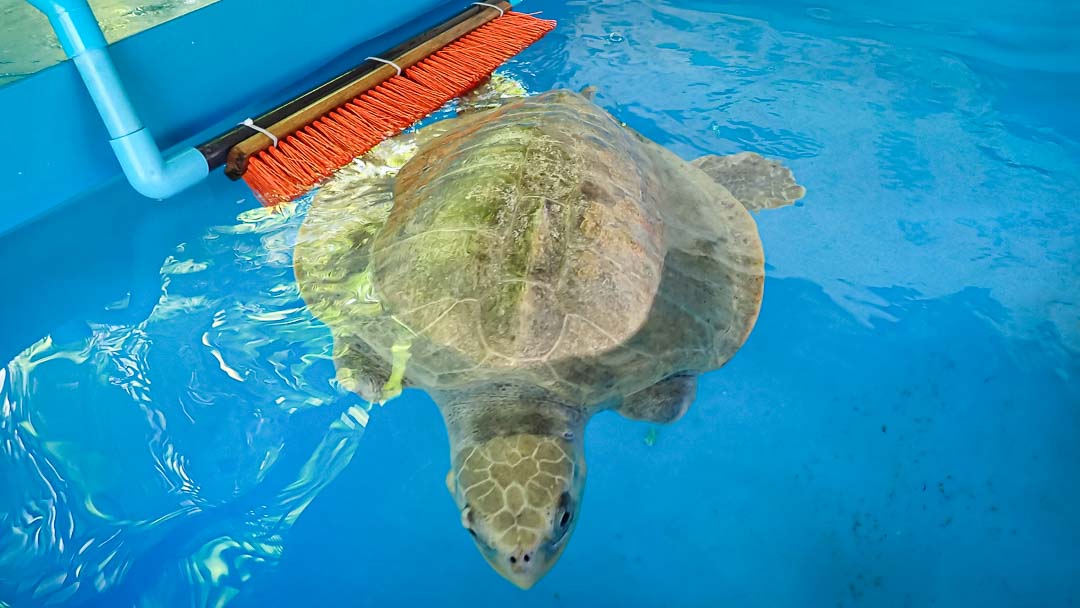Are you looking to create a stimulating and comfortable environment for your pet turtle at home? Well, you’re in luck because today we’re going to dive into the topic of environmental enrichment for turtles. By the end of this article, you’ll have a better understanding of why environmental enrichment is important and how it can benefit your turtle’s overall well-being.
When it comes to raising turtles at home, creating an environment that mimics their natural habitat is crucial. Turtles are curious creatures that thrive in environments that allow them to explore, forage, and interact with their surroundings. This is where environmental enrichment comes into play. By providing your turtle with a diverse range of stimuli, such as hiding spots, basking areas, and various objects to investigate, you can help meet their physical and mental needs. Environmental enrichment not only keeps your turtle entertained and engaged but it also promotes their natural behaviors and helps prevent stress-related issues. So, if you want to create a happy and healthy home for your pet turtle, stay tuned because we’re about to dive deeper into the world of environmental enrichment!
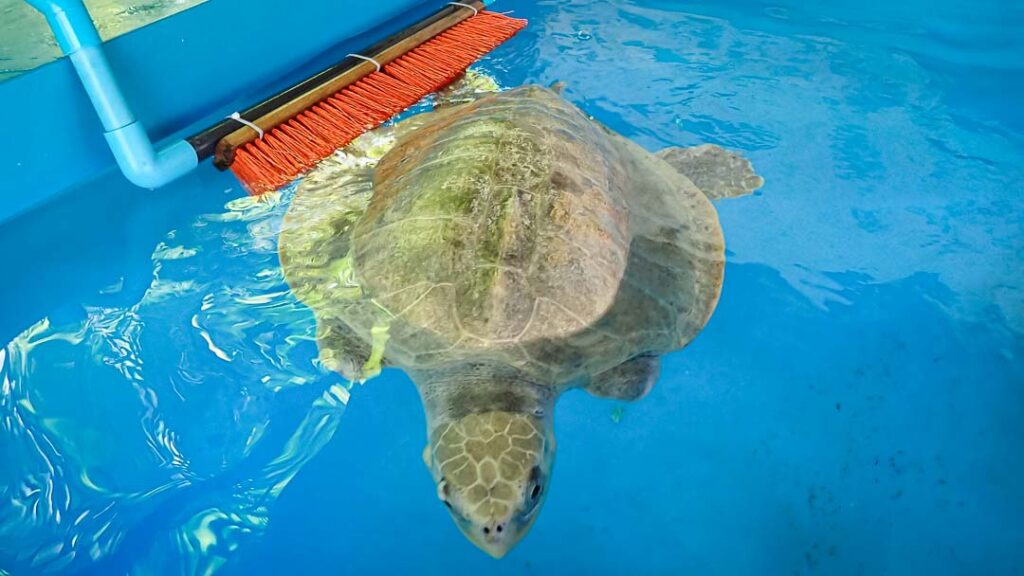
Introduction
Turtles are fascinating pets that require proper care and attention to ensure their well-being. One important aspect of turtle care is environmental enrichment. Environmental enrichment refers to the creation of a stimulating and dynamic environment for turtles, which promotes their physical and mental health. By providing a suitable habitat, choosing appropriate substrates, offering adequate lighting and heating, providing a varied and nutritious diet, implementing enrichment techniques, stimulating sensory experiences, encouraging social interaction, engaging in enrichment activities, monitoring effectiveness, considering individual turtle needs, ensuring safety, and addressing common challenges, we can enhance the overall welfare and longevity of our pet turtles, as well as strengthen our bond with them.
Improving Physical Health
Turtles, like any other living creatures, require physical exercise to maintain their health. Environmental enrichment plays a crucial role in encouraging physical activity. By providing sufficient space, turtles are able to move around and explore their surroundings. A spacious enclosure allows them to engage in natural behaviors, such as climbing, swimming, and digging, which in turn helps to strengthen their muscles and improve their overall fitness.
Another important factor to consider is the maintenance of proper water quality. Turtles are aquatic animals and require clean and well-maintained water to thrive. Regular filtration and water changes are necessary to prevent the build-up of harmful bacteria and keep the water parameters within a healthy range. By ensuring clean water, turtles can swim and exercise without the risk of developing infections or other health issues.
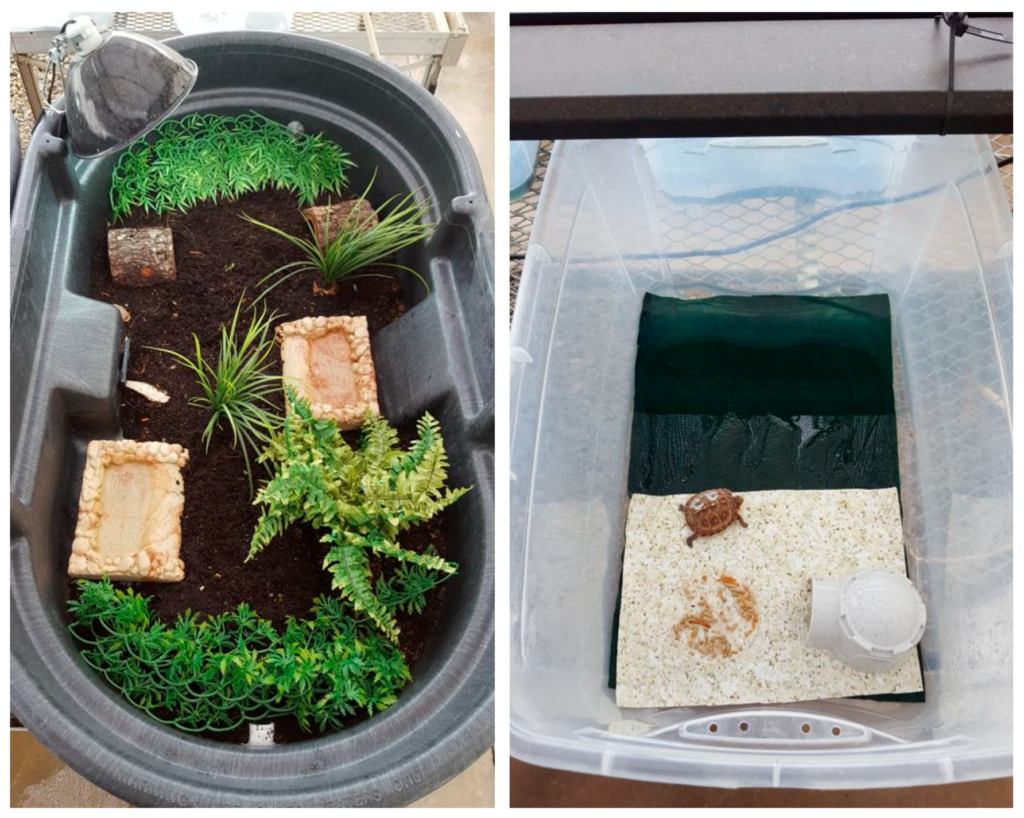
Enhancing Mental Stimulation
In addition to physical exercise, mental stimulation is equally important for the well-being of pet turtles. Turtles are intelligent creatures that require mental challenges to stay engaged and satisfied. Environmental enrichment provides opportunities for mental stimulation, which helps to prevent boredom and enhance cognitive abilities.
One way to provide mental stimulation is by promoting natural behaviors. Turtles have innate instincts that can be nurtured through environmental enrichment. For example, providing a hiding spot encourages turtles to exhibit their natural instinct to seek shelter. This allows them to feel safe and secure in their environment, leading to reduced stress levels and improved mental well-being.
Another effective method is rotating decorations and tank layout. By frequently changing the arrangement of objects in their enclosure, turtles are provided with a new and novel environment to explore. This stimulates their curiosity and keeps them mentally active. Adding live plants and branches also adds complexity to the turtles’ habitat, making it more visually appealing and mentally stimulating.
Promoting Natural Behaviors
Environmental enrichment helps to promote and encourage natural behaviors in pet turtles. For example, turtles are known to bask in the sun to regulate their body temperature. By setting up basking areas in their enclosure, complete with heat lamps, turtles can engage in this natural behavior, which is crucial for their thermoregulation.
Additionally, turtles are omnivorous and require a varied diet that includes both vegetables and protein. Environmental enrichment can be used to encourage natural feeding behaviors by providing puzzle feeders and foraging opportunities. These feeding devices require turtles to work for their food, mimicking their natural foraging behavior in the wild. This not only provides mental stimulation but also ensures that the turtles are actively engaged while eating, promoting a healthier eating habit.
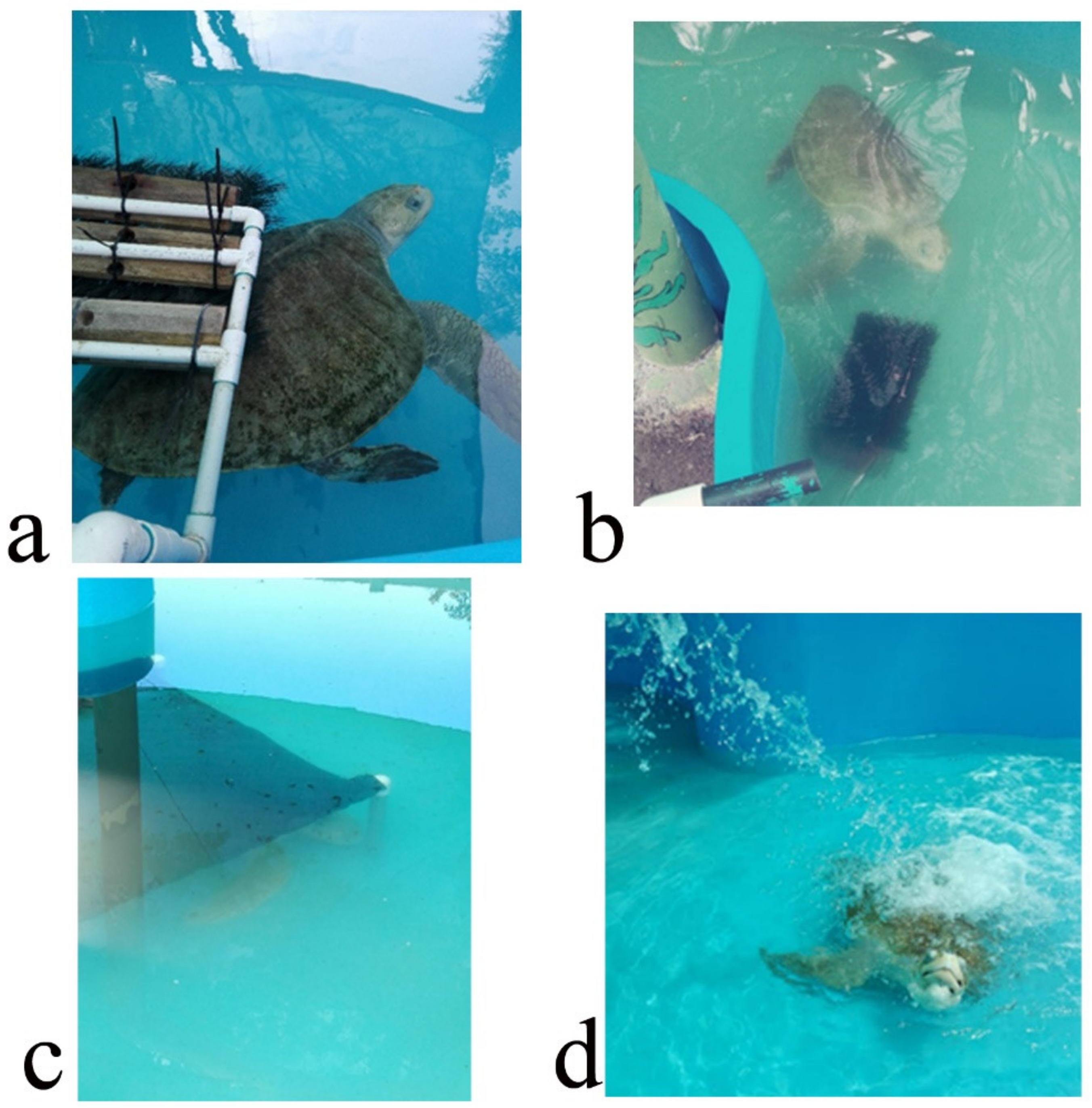
Preventing Boredom and Stress
Just like humans, turtles can also experience boredom and stress if their environment lacks stimulation. Environmental enrichment plays a vital role in preventing these issues by providing a dynamic and interesting environment for turtles to explore. By offering a diverse range of activities, toys, and objects, we can keep our turtles mentally and physically engaged.
Boredom and stress can have negative effects on the overall health of turtles. This includes a weakened immune system, increased susceptibility to diseases, and even a decline in appetite. By actively engaging our turtles in environmental enrichment activities, we can help prevent these negative consequences and ensure their well-being.
Creating a Suitable Habitat for Pet Turtles
Creating a suitable habitat is the foundation of successful turtle care. A well-designed and properly maintained enclosure provides turtles with a safe and comfortable environment to thrive in. Here are some key factors to consider when setting up a turtle habitat at home.
Providing Sufficient Space
Turtles require ample space to move around and express their natural behaviors. The size of the enclosure should be appropriate for the species and size of the turtle. Generally, it is recommended to provide at least 10 gallons of water per inch of turtle shell length. However, larger enclosures are always better, as they allow for more activity and exploration.
Maintaining Proper Water Quality
Water quality is of utmost importance for the health of aquatic turtles. Regular filtration and water changes are essential to ensure clean and clear water. Turtles produce waste and it is crucial to remove it promptly to prevent the build-up of harmful bacteria. Water temperature should also be monitored and maintained within the appropriate range for your specific turtle species.
Setting Up Basking Areas
Turtles require a basking area where they can climb out of the water and expose themselves to heat and light. This mimics the natural basking behavior of turtles and allows them to regulate their body temperature. Basking areas should be equipped with heat lamps that provide both light and warmth. The temperature under the heat lamp should be carefully controlled to provide a suitable basking spot for your turtle.
Incorporating Hiding Spots
Turtles also require hiding spots where they can retreat and feel safe. Hiding spots can be created using rocks, logs, or purpose-built hides. These provide turtles with a secure area to rest and relax, reducing stress levels and promoting a sense of security.
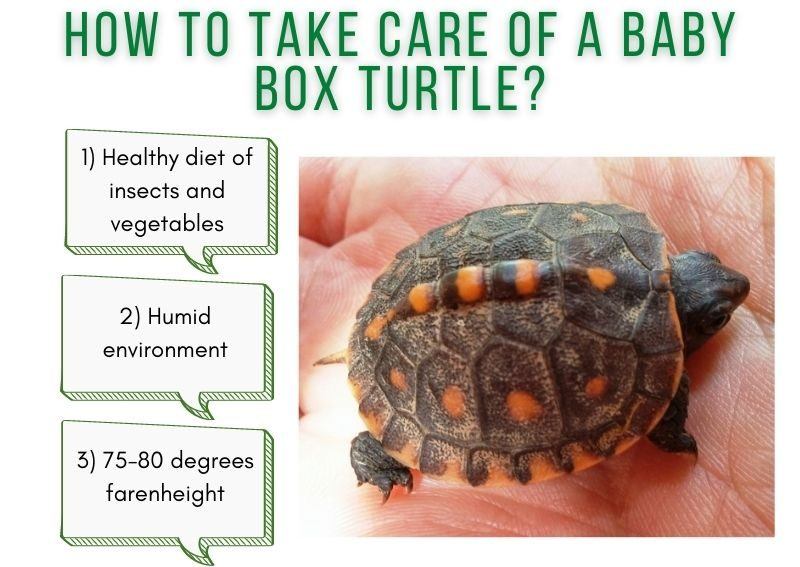
Choosing Suitable Substrates for Pet Turtle Enclosures
The choice of substrate is an important consideration when setting up a turtle enclosure. Substrates not only provide a natural feel to the enclosure but also serve various functions, such as aiding in the removal of waste and maintaining proper water quality. Here are some suitable substrate options for turtle enclosures:
Natural Soil and Gravel
Natural soil and gravel substrates are commonly used for turtle enclosures. These substrates mimic the natural environment of turtles and allow them to exhibit natural behaviors, such as digging and burrowing. They also provide a surface for turtles to walk on, which helps to keep their nails trimmed naturally.
River Rocks and Pebbles
River rocks and pebbles can be used as a substrate for the aquatic area of the turtle enclosure. These substrates are easy to clean and maintain, as waste can simply be siphoned or removed manually.
Aquatic Plants and Moss
Aquatic plants and moss can be added to the enclosure as both decoration and substrate. These plants not only add visual appeal but also provide turtles with a sense of security and natural habitat. They also help to maintain water quality by absorbing waste and producing oxygen.
Artificial Substrates
Artificial substrates, such as reptile carpet or turtle mats, can be used as an alternative to natural substrates. These substrates are easy to clean and maintain, making them ideal for turtles that are prone to consuming substrate or have specific health concerns.
When selecting a substrate for your turtle enclosure, it is important to consider the specific needs of your turtle species and its natural habitat. Some turtles may have specific requirements, such as soft sand for nesting, while others may prefer a rocky and sandy substrate for digging.
Providing Adequate Lighting and Heating
Lighting and heating are essential for the health and well-being of pet turtles. Turtles require exposure to UVB lighting for vitamin D synthesis, which is important for calcium absorption and overall bone health. Additionally, they also require a basking spot where they can thermoregulate and maintain their body temperature. Here are some important factors to consider when providing lighting and heating for your turtles.
UVB Lighting for Vitamin D Synthesis
Turtles require UVB lighting to synthesize vitamin D3 in their bodies. Vitamin D3 is essential for calcium absorption, which is crucial for healthy bone development and prevention of metabolic bone disease. It is important to provide UVB lighting that is suitable for turtles and meets their specific needs. UVB lamps should be replaced according to the manufacturer’s recommendations to ensure their effectiveness.
Heat Lamps for Basking
A basking spot with a heat lamp is necessary for turtles to thermoregulate. Turtles require a gradient of temperatures in their enclosure, with the basking spot being the warmest area. The basking temperature should be within the appropriate range for your specific turtle species. Turtles will often spend a significant amount of time basking, especially after a meal or during periods of rest.
Thermoregulation and Temperature Gradient
Maintaining a proper temperature gradient in the enclosure is crucial for turtle health. This allows turtles to move between warm and cooler areas, as they would in their natural habitats. The water temperature should also be monitored and maintained within the appropriate range for your specific turtle species.
Avoiding Overheating
While providing heat is important, it is equally important to avoid overheating. Turtles cannot regulate their body temperature as efficiently as mammals, and excessive heat can be harmful or even fatal. It is essential to monitor the temperature in the enclosure regularly and adjust the heating sources accordingly. Using a thermometer and thermostat can help ensure the temperature remains within safe limits for your turtles.
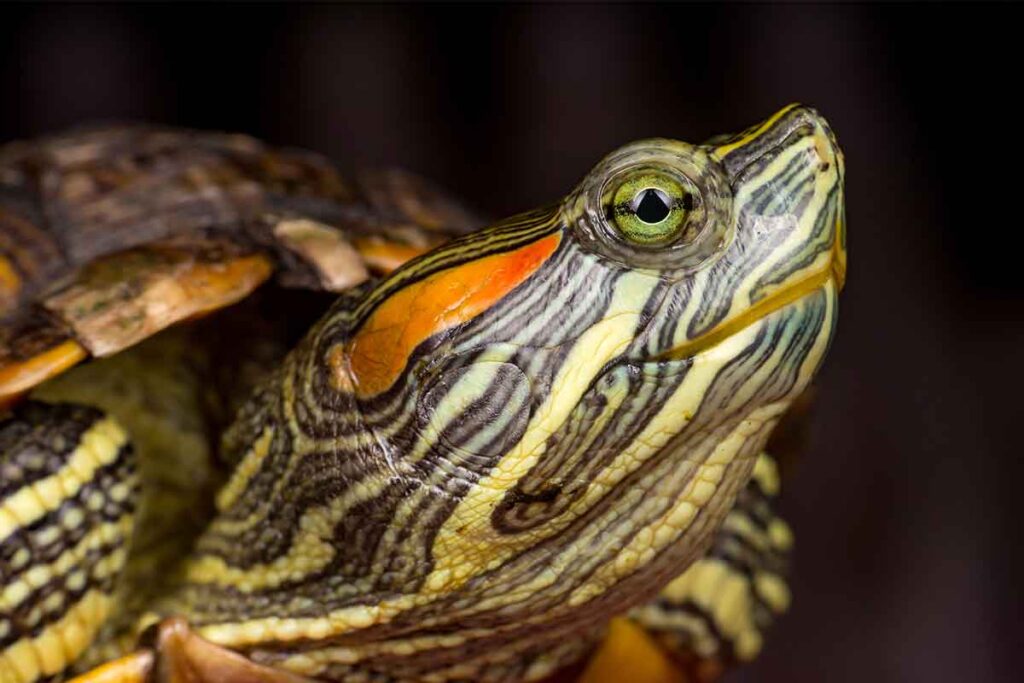
Offering a Varied and Nutritious Diet
A varied and nutritious diet is vital for the health and well-being of pet turtles. Providing a balanced diet that meets the specific nutritional needs of turtles is essential for their growth, development, and overall health. Here are some important factors to consider when feeding your pet turtles.
Including a Variety of Vegetables and Fruits
Vegetables and fruits should form a significant portion of a turtle’s diet. Leafy greens, such as kale, collard greens, and dandelion greens, are excellent sources of essential vitamins and minerals. Other vegetables, such as carrots, squash, and bell peppers, can also be included in the diet. Fruits should be offered in moderation, as they are high in sugar. Suitable fruit options include strawberries, blueberries, and melons. It is important to research the specific dietary requirements of your turtle species to ensure you are providing the appropriate variety of vegetables and fruits.
Priming Prey Items for Carnivorous Turtles
Carnivorous turtles, such as sliders and map turtles, require a diet that includes protein from animal sources. Feeder fish, insects, and commercial turtle pellets can be offered as a source of protein. It is recommended to gut-load and dust prey items with calcium and vitamin D3 supplements before feeding them to your turtle. This ensures that your turtle receives the necessary nutrients for its growth and development.
Supplementing with Calcium and Vitamin D3
Calcium and vitamin D3 are essential for the proper development of a turtle’s shell and bones. These nutrients can be provided through calcium supplements and exposure to UVB lighting. It is important to consult with a veterinarian or reptile specialist to determine the appropriate supplementation routine for your turtle species.
Avoiding Toxic Foods
Certain foods can be toxic to turtles and should be avoided. These include foods that are high in salt, sugar, or fat. Additionally, toxic plants or plants treated with pesticides should not be offered to turtles. It is important to research the specific dietary restrictions and toxic foods for your turtle species to ensure their safety and well-being.
Implementing Environmental Enrichment Techniques
Implementing environmental enrichment techniques is a great way to enhance the overall well-being and stimulate the natural behaviors of pet turtles. These techniques provide mental and physical challenges to turtles, keeping them engaged and satisfied. Here are some effective environmental enrichment techniques for pet turtles.
Rotating Decorations and Tank Layout
Frequently changing the arrangement of objects, decorations, and hiding spots in the turtle enclosure provides turtles with a novel and ever-changing environment. This stimulates their curiosity and keeps them mentally engaged. You can rotate the placement of rocks, logs, or other decorations to create a different setup every few weeks.
Introducing Live Plants and Branches
Adding live plants and branches to the turtle enclosure creates a more natural and visually appealing habitat. The plants provide turtles with hiding spots and a sense of security, while the branches allow them to climb and explore their environment. Live plants and branches can be purchased from a pet store or sourced from your local environment, ensuring they are safe and non-toxic for turtles.
Adding Floating Platforms and Logs
Turtles enjoy basking and resting on floating platforms and logs. These provide a comfortable and safe area for turtles to soak up heat and light. Floating platforms can be made from materials such as cork bark, plastic, or acrylic, ensuring they are sturdy and capable of supporting the weight of the turtle.
Providing Puzzle Feeders and Foraging Opportunities
Providing puzzle feeders and foraging opportunities is a great way to mentally stimulate turtles during mealtime. Puzzle feeders and foraging toys require turtles to work for their food, engaging their natural foraging behavior. You can hide food in different locations in the enclosure or use interactive feeders that require the turtle to figure out how to access the food.
Stimulating Sensory Experiences for Pet Turtles
Turtles perceive the world through their senses, and providing stimulating sensory experiences can greatly enhance their well-being. By engaging their senses of hearing, vision, touch, taste, and scent, we can create a more enriching environment for our pet turtles.
Auditory Stimulation
Turtles have the ability to hear sounds, and auditory stimulation can be provided through the use of underwater speakers or playing soft, soothing music near the enclosure. It is important to monitor the volume and intensity of sounds to ensure they are not too loud or disturbing for the turtles.
Visual Enrichment
Visual enrichment can be achieved by introducing different colors, shapes, and patterns into the enclosure. This can be done through the use of various decorations, plants, and objects. Turtles are naturally curious and enjoy exploring visually interesting environments.
Tactile and Texture Exploration
Turtles have a keen sense of touch, and tactile stimulation can be provided by offering different textures in the enclosure. This can include providing smooth rocks, rough surfaces, and different substrates. Turtles will enjoy exploring and interacting with these different textures.
Taste and Scent Enrichment
Turtles have well-developed senses of taste and scent, and enriching their environment with different scents and flavors can provide additional stimulation. This can be achieved by offering a variety of foods with different tastes and smells. Turtles may show preferences for certain flavors, so it is important to observe their responses and provide a balanced diet.
Encouraging Social Interaction and Manipulation
Social interaction and manipulation are important aspects of environmental enrichment for pet turtles. Turtles are social animals that benefit from opportunities to observe and interact with their own kind and with humans. By providing social stimuli and interactive objects, we can enhance their well-being and facilitate a stronger bond with them.
Allowing Turtles to Observe and Interact with Each Other
If you have multiple turtles, it is beneficial to provide them with the opportunity to observe and interact with each other. This can be done by arranging the enclosure in a way that allows turtles to see each other without causing stress. It is important to ensure that there is enough space and hiding spots for each turtle to have their own territory.
Providing Toys and Interactive Objects
Toys and interactive objects can provide mental stimulation and encourage physical activity. Turtles may enjoy playing with floating toys, objects that can be pushed or manipulated, or even textured items that provide a different tactile experience. The toys should be safe and made from non-toxic materials.
Handling and Controlled Interaction with the Owner
Turtles can also benefit from controlled interaction with their owners. Gentle handling and supervised exploration outside of the enclosure can provide turtles with mental and physical stimulation. However, it is important to avoid overhandling or stressing the turtles, as they need their own space and time to rest.
Avoiding Overhandling and Stress
While social interaction is important, it is crucial to avoid overhandling turtles, as this can cause stress and affect their well-being. Turtles should be handled with care and only for short periods of time. It is also important to observe their body language and behavior to ensure they are comfortable and not showing signs of distress.
Engaging in Environmental Enrichment Activities
Engaging in environmental enrichment activities is a fun and interactive way to provide mental and physical stimulation for pet turtles. These activities not only keep turtles entertained but also promote their overall well-being. Here are some examples of enrichment activities you can try with your pet turtles.
Creating Obstacle Courses and Mazes
Setting up obstacle courses and mazes in the turtle enclosure provides both mental and physical exercise for the turtles. You can create tunnels using PVC pipes, arrange rocks and logs for them to navigate, or even create a small maze using low barriers. This encourages turtles to explore and problem-solve, keeping their minds active and engaged.
Organizing Treasure Hunts and Scavenger Hunts
Treasure hunts and scavenger hunts are a great way to provide mental stimulation for turtles. You can hide food or treats throughout the enclosure and encourage the turtles to find them. This stimulates their natural foraging behaviors and keeps them mentally engaged and active.
Introducing Water Games and Floating Toys
Turtles enjoy playing in the water, and introducing water games and floating toys can provide a lot of enjoyment for them. You can place floating toys, such as ping pong balls or small rubber ducks, in the water for turtles to push around or interact with. This promotes physical activity and stimulates their natural curiosity.
Offering Environmental Puzzles and Challenges
Environmental puzzles and challenges can be created by introducing different objects or food puzzles into the turtle enclosure. Turtles have a natural instinct to explore and manipulate objects, and puzzles can provide them with mental stimulation. You can hide food in puzzle feeders that require the turtles to solve a problem or work through a series of steps to access the food.
Monitoring and Assessing the Effectiveness of Enrichment
Monitoring and assessing the effectiveness of enrichment activities is crucial to ensure that they are benefiting the turtles and meeting their needs. Here are some ways to monitor and assess the effectiveness of environmental enrichment for pet turtles.
Behavioral Observation and Tracking
Observing and tracking the behavior of your turtles is a key aspect of assessing the effectiveness of enrichment activities. This can be done by observing their activity levels, feeding responses, interaction with enrichment objects, and overall well-being. Keeping a record or journal of their behavior can help identify patterns and determine the impact of enrichment on their daily routines.
Applying Scientific Research and Studies
Scientific research and studies conducted on turtle behavior and enrichment can provide valuable insights into the effectiveness of various enrichment techniques. Research findings can help guide our decisions in selecting and implementing enrichment activities for our pet turtles. It is important to keep up to date with the latest research and apply the knowledge gained to enhance the well-being of our turtles.
Modifying Enrichment Based on Turtle’s Responses
Each turtle is unique, and their responses to different enrichment activities may vary. It is important to modify and adapt enrichment techniques based on the individual turtle’s preferences and needs. If a particular enrichment activity does not seem to engage the turtle or if it causes stress, it should be modified or replaced with a more suitable alternative.
Seeking Professional Advice if Necessary
If you are unsure about the effectiveness of enrichment activities or if your turtle is displaying abnormal behaviors, it is always advisable to seek professional advice. Consulting a veterinarian or reptile specialist can help identify any underlying health issues or provide guidance on specific enrichment strategies for your turtle.
Considering Individual Turtle Needs and Species Differences
It is important to recognize that each turtle species has specific needs and requirements when it comes to environmental enrichment. Different turtles may have unique characteristics, behaviors, and preferences. Tailoring enrichment techniques to the specific needs of your turtle species is crucial for their overall well-being. Here are some key factors to consider when considering individual turtle needs and species differences.
Recognizing the Unique Characteristics of Different Turtles
Different turtle species have unique characteristics, such as size, behavior, and habitat preferences. It is important to research and understand the specific traits of your turtle species to provide them with the most suitable enrichment activities. For example, aquatic turtles may require different types of enrichment compared to terrestrial or semi-aquatic turtles.
Tailoring Enrichment to Specific Species
Enrichment techniques should be tailored to the specific needs and preferences of your turtle species. Factors such as dietary requirements, preferred habitat, and natural behaviors should be considered when selecting and implementing enrichment activities. Taking the time to study and understand your turtle species will help ensure that the enrichment provided is appropriate and effective.
Factoring in Age and Size Differences
Age and size differences should also be taken into account when considering enrichment for turtles. Younger turtles may have different activity levels and require simpler enrichment activities compared to older turtles. Similarly, smaller turtles may require smaller and less complex enrichment objects to ensure their safety and comfort.
Adapting Enrichment for Special Needs Turtles
Some turtles may have special needs or health concerns that require specific adaptations in their enrichment activities. For example, turtles with shell deformities may benefit from specially designed floating platforms or ramps to assist with basking. Turtles with mobility issues may require elevated food dishes or modified feeding arrangements. It is important to consult with a veterinarian or reptile specialist to determine the best ways to adapt enrichment for turtles with special needs.
Ensuring Safety and Minimizing Hazards
Creating a safe environment for pet turtles is essential to their well-being. It is important to identify and minimize potential hazards or dangers in their enclosure. Here are some key considerations to ensure the safety of pet turtles.
Avoiding Sharp Objects and Dangerous Materials
Sharp objects, such as broken glass, nails, or edges of decorations, should be removed or covered to prevent injuries to turtles. Additionally, any materials or decorations used in the enclosure should be safe and non-toxic.
Checking for Escape Routes and Proper Enclosure Security
Turtles are excellent escape artists and can find their way out of poorly secured enclosures. It is important to regularly inspect the enclosure for any potential escape routes, such as gaps in the fencing or loose lids. Ensuring that the enclosure is securely closed and properly sealed will prevent turtles from escaping and getting lost or injured.
Eliminating Potential Toxic Substances
Turtles are sensitive to certain chemicals and substances that may be toxic to them. It is important to avoid using cleaning products, pesticides, or fertilizers near the turtle enclosure. Additionally, plants or foliage added to the enclosure should be non-toxic and safe for turtles to consume.
Regular Maintenance and Cleaning
Regular maintenance and cleaning of the turtle enclosure is essential to prevent the build-up of waste, bacteria, and other harmful substances. Water quality should be monitored and maintained, and the enclosure should be cleaned regularly to provide a safe and healthy environment for the turtles. It is important to follow proper cleaning procedures and use non-toxic cleaning agents to ensure the safety of the turtles.
Addressing Common Challenges in Environmental Enrichment
Environmental enrichment for pet turtles may sometimes present challenges or difficulties. It is important to be prepared and proactive in addressing these challenges to ensure the well-being of our turtles. Here are some common challenges in environmental enrichment and ways to overcome them.
Overcoming Budget Limitations
Budget limitations can sometimes restrict the variety and complexity of enrichment activities that can be implemented. However, there are many low-cost or DIY options available that can still provide a stimulating environment for turtles. For example, simple objects, such as PVC pipes, rocks, or logs, can be used to create hiding spots, basking areas, or climbing structures.
Dealing with Limited Space
Limited space can make it challenging to provide a diverse and enriching environment for pet turtles. However, it is still possible to create a stimulating space even with limited room. Vertical space can be utilized by adding shelves or ramps for climbing, and the enclosure can be rearranged periodically to provide a changing environment.
Managing Aggression or Dominance
In multi-turtle enclosures, aggression or dominance behaviors can sometimes arise. It is important to monitor the turtles’ interactions and provide enough hiding spots and space to reduce conflicts. Separating turtles, if necessary, may be required to ensure the well-being of all turtles involved.
Resolving Territorial Issues
Territorial issues can also arise in multi-turtle enclosures, especially if the enclosure is not large enough to accommodate all the turtles’ individual territories. Providing multiple basking areas, hiding spots, and feeding stations can help reduce territorial disputes. It is important to observe the turtles’ behavior and intervene if any aggression or stress is observed.
Conclusion
Environmental enrichment plays a vital role in the overall welfare and longevity of pet turtles. By providing a suitable habitat, choosing appropriate substrates, offering adequate lighting and heating, providing a varied and nutritious diet, implementing enrichment techniques, stimulating sensory experiences, encouraging social interaction, engaging in enrichment activities, monitoring effectiveness, considering individual turtle needs, ensuring safety, and addressing common challenges, we can create a stimulating and enriching environment for our pet turtles. Through environmental enrichment, we not only promote their physical and mental well-being but also strengthen our bond with them. Continued exploration and research in the field of environmental enrichment will further enhance our understanding of turtles’ needs and contribute to their optimal care at home. So, embrace the role of environmental enrichment in raising pet turtles and watch them thrive in their enriched and engaging environment.
